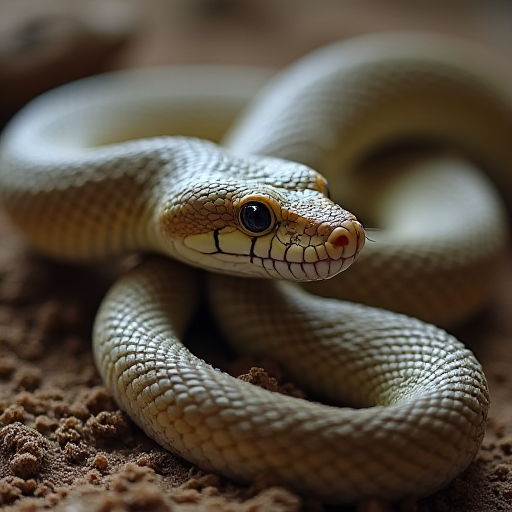
Why Do Snakes Shed Their Skin?
Snakes are fascinating creatures that have intrigued humans for centuries. One of the most intriguing aspects of their biology is their ability to shed their skin. This process, known as ecdysis or molting, is a vital part of a snake's life cycle. In this article, we will delve into the reasons why snakes shed their skin, the process involved, and its significance in the life of these remarkable reptiles.
Understanding Ecdysis
Ecdysis is the scientific term for the shedding of the outer layer of skin. Unlike humans, who continuously shed skin cells, snakes do so periodically and all at once. This process is a key aspect of their growth and health.
Reasons for Skin Shedding
1. Growth
The primary reason snakes shed their skin is to accommodate growth. Unlike mammals, reptiles have a skin that does not grow with their body. As a snake grows, its skin becomes tight and restrictive. To continue growing, the snake must shed its old skin and form a new, larger one. This is analogous to outgrowing a piece of clothing and needing to replace it with a larger size.
2. Removal of Parasites
Shedding skin provides snakes with an effective way to remove parasites. Mites and other parasites can inhabit the outer layer of a snake's skin. By shedding this layer, snakes can rid themselves of these unwanted guests, maintaining healthier skin and reducing the risk of infection.
3. Healing and Renewal
Shedding also allows for the healing of wounds and skin regeneration. If a snake's skin is damaged due to injury or environmental factors, shedding helps remove the damaged skin and replace it with a new, intact layer. This renewal process is essential for maintaining the snake's protective barrier against the environment.
4. Aesthetic and Camouflage Benefits
A newly shed skin is often more vibrant and appears healthier. This can play a role in mating displays or territorial behaviors where visual appearance matters. Additionally, shedding can help refresh the snake’s ability to blend into its surroundings, which is vital for both predation and protection from predators.
The Process of Shedding
The shedding process is a complex and highly regulated biological event. It typically involves several stages:
Pre-Shedding Phase
Before shedding, a snake will exhibit certain behaviors and physical changes. Its skin may appear dull, and its eyes might become cloudy or blue due to fluid buildup between the old and new layers of skin. This phase can last from a few days to a week.
The Shedding Process
The actual shedding begins when the snake creates a small tear in its old skin, often by rubbing against rough surfaces. The snake then wriggles and slides out of its old skin, turning it inside out in the process. This is often compared to a person removing a tight, inside-out sock.
Post-Shedding Phase
Once the shedding is complete, the snake’s new skin is revealed. It is typically more vibrant and clear, and the snake may appear rejuvenated. The snake will often spend time basking in the sun to help its new skin dry and harden.
Frequency of Shedding
The frequency of shedding varies based on several factors, including the snake's age, species, and environmental conditions. Younger snakes, which grow more rapidly, may shed every few weeks, whereas older snakes might shed only a few times a year.
Conclusion
Shedding is a crucial process for snakes that serves multiple purposes, from facilitating growth to ensuring their health and survival. Understanding why snakes shed their skin provides insight into their biology and the adaptations that have allowed them to thrive in diverse environments. This remarkable process is yet another reminder of the intricate and fascinating world of reptiles.
By appreciating the reasons and mechanisms behind snake shedding, we gain a deeper respect for these enigmatic creatures and their place in the natural world.
